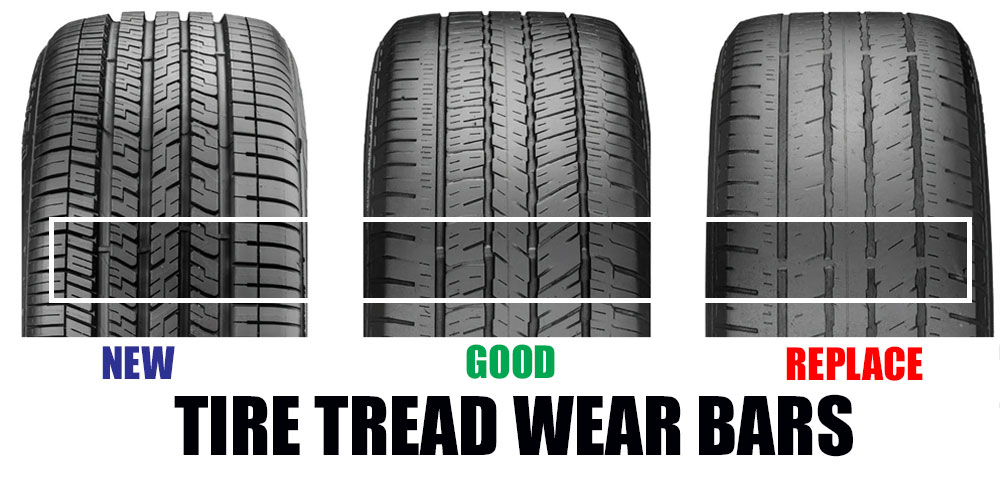image source: https://wheelsadviser.com
Are you wondering how often to replace tires to ensure optimal vehicle performance and safety? Look no further as we explore the recommended timeline for replacing your tires and the factors that can affect their lifespan. Understanding when to replace your tires is essential for keeping your vehicle running smoothly and maintaining your safety on the road. Keep reading to learn more about this important aspect of vehicle maintenance.
How Often to Replace Tires: A Comprehensive Guide to Tire Maintenance
Tires are an essential component of any vehicle, responsible for providing traction, stability, and overall safety on the road. However, like any other part of your car, they are subject to wear and tear and will eventually need to be replaced. Knowing when to replace your tires is crucial for maintaining the performance and safety of your vehicle. In this comprehensive guide, we will discuss the factors that affect tire wear, how to check tire condition, and the recommended frequency for tire replacement.
Factors Affecting Tire Wear
The lifespan of a tire depends on various factors, including the type of tire, the road conditions, and your driving habits. Here are the key factors that can affect how long your tires will last:
1. Tire Type: Different types of tires have different tread patterns and rubber compounds, which can affect their wear rate. For example, performance tires, designed for high-speed driving, have a softer rubber compound, making them wear out faster than all-season tires.
2. Road Conditions: Driving on rough or uneven roads can cause faster tire wear. Potholes, gravel, and debris can all contribute to premature tire damage.
3. Driving Habits: Aggressive driving, such as hard braking and cornering, can wear out your tires faster. It’s essential to drive carefully and avoid sudden movements to prolong the life of your tires.
4. Tire Maintenance: Proper tire maintenance, such as regular rotation, balancing, and alignment, can help extend the life of your tires. Neglecting these tasks can cause uneven wear and shorten the lifespan of your tires.
How to Check Tire Condition
Regularly checking your tires’ condition is crucial for ensuring their safety and longevity. Here’s how to do it:
1. Tread Depth: The depth of your tire’s tread is a good indicator of its remaining lifespan. The tread should be at least 1/16 of an inch (1.6mm) deep to provide adequate traction. You can use a tread depth gauge or the “penny test” to check the tread depth.
2. Tread Wear Indicators: Most tires have built-in tread wear indicators, which are small bars or bumps within the tread grooves. When the tread wears down to the level of these indicators, it’s time to replace your tires.
3. Sidewall Damage: Inspect the sidewalls of your tires for any cuts, bulges, or cracks. These can weaken the tire’s structure and increase the risk of a blowout.
4. Age: Tires age even when not in use, and their rubber can start to degrade after five to six years. Check the date code on your tires to determine their age. If they are more than six years old, consider replacing them, even if the tread is still good.
Recommended Frequency for Tire Replacement
There is no set timeline for when tires should be replaced, as it depends on the factors mentioned above. However, here are some general guidelines to follow:
1. Every 6 years: As mentioned earlier, tires should be replaced after six years, regardless of their tread depth. This is because the rubber starts to deteriorate after this time, making the tires more susceptible to failure.
2. Every 50,000 miles: On average, tires can last between 40,000 to 80,000 miles. However, this can vary depending on the factors mentioned above, as well as the quality of the tire.
3. Every 3-4In conclusion, regular tire maintenance and replacement is essential for safe and efficient driving. It is recommended to replace your tires every 5 to 6 years, or every 50,000 miles, to ensure optimal performance and safety on the road. By following these guidelines, you can prolong the lifespan of your tires and avoid potential accidents or breakdowns. Remember, staying on top of tire replacements not only benefits your vehicle, but also your overall driving experience. So, make sure to schedule regular inspections and replacements to keep your tires in top shape.
